UPDATED: added the names of two speakers: Hugues Bouchard and Diego Arechaga.
We learn from Ed Parsons, Google’s Geo man, that Google Maps and OSM are not fierce enemies. Au contraire, “Google wants OpenStreetMap to succeed“. So I took a picture of Ed presenting OSM, announcing it cheekily as “Ed’s defection to OSM” (no, that’s not true).
All of this might have earned him the title of Saint Parsons (thanks, Henk Hoff).
I agree on one thing: Google Maps and OSM are not competitors. OSM is a database providing geographical data. You can use it to create a cartographic rendering, but it’s not its main goal. People seem to forget it.
Yahoo’s Adam Rae showed how you can use Scale Spaces theory to infer regions in a map from the geographical distribution of tags. Although Adam’s results are great in their own right, and the mere ability of detecting boundaries via tags is a fascinating possibility, I find this extremely interesting also for its implicit dynamism: tags about a location can change.
Ethnographers who wish to learn how the perception of what is a place, how a place changes, or how the boundaries of a location are fluid, might use this technique. This is true in space and time. An interesting, although intended to be funny, example of such perception shift is http://thisisntfuckingdalston.co.uk showing that the boundaries of a place change according to a spatial component. Moreover, a temporal component might be added to the model, assessing how people’s perception of a given place changes over time. Take, for example, an expanding neighbour.
Jan Nowak, an engineer at Nokia, showed how Nokia Maps API can be used to go “from data to meaning in 20 minutes“. Someone complained that “Nokia doesn’t do anything that Google hasn’t already done“. I don’t think this holds true: first of all, there are some genuinely innovative UI elements in Nokia Maps (see WebGL). But more importantly, they are adding a great element of competition to already existing services. Even if Nokia Maps were just yet another map service, with comparable features to Google’s, that would be beneficial to developers and to the geo community at large. It’s a challenge that will bring innovation. Why complain?
Jeremy Morley from the University of Notthingham gave the attendees the last updates about the OSM-GB project, whose aim is to measure and improve the quality of OpenStreetMap in Great Britain. This is a very interesting project with very useful outcomes both in the academic and applicative areas. The project aims to answer questions such as how authoritative a crowd-sourced map can be, and to show how multiple sources, including crowd-sourced maps, can be used together to improve the overall quality of the geographical information. One very important aspect of this project is exactly its contribution to OSM happening at the same time as offering a model for updates to non-crowdsourced mapping efforts.
Having contributed to the project and to the presentation, I’m very happy with the reception that Taarifa has received, mostly thanks to a great presentation by Mark Iliffe, a PhD student at the University of Nottingham. His public engagement skills are well known and they earned Taarifa promises of contribution by many of the people attending. There was also a mini hack-session with over 10 people willing to discuss Taarifa and envision ways to improve it and put it to good use.
Day two opened with Jan Van Eck telling the audience why Esri is interested in Where Camp and how they think they can contribute to the geo-computing community.
He showed some of Esri’s work in the area of maps production and user experience, with the goal of making a case in support of their philosophy, not always in tune with that of OpenStreetMap. However, it must be said that Esri’s contribution to the perception in the public of the existence of a “geographical issue” is certainly a big one.

Another interesting piece of work by Yahoo, led by Vanessa Murdock with contributions by Hugues Bouchard and Diego Arechaga (pictured below), showed how hash tags can be used to infer hyperlocal trends, similarly to what Adam presented earlier on.

Goldsmith’s design student Francisco Dans led a very practical session about real-time data crunching with map displaying as a result, with tricks and tips on how to use Processing to parse xml/kml. He showed how he used this framework to display trams in San Francisco on a map in real time. Francisco advises using UnfoldingMaps as a tool to create interactive thematic maps and live geovisualizations.
Ollie O’Brien is a well known attendee of WhereCamps and Geomobs, working as a Research Associate at CASA. He introduced his recent work on creating City Dashboards: web aggregators of several data sources about a single city. These are extremely useful central points of information for citizens and tourists. Ollie also showed a fun and mind boggling piece of software, developed at CASA, that allows users to fly the sky as they were pigeons. Using a Microsoft Kinect controller and Google Earth, the user can “play” with the system by flying among building using gestures.
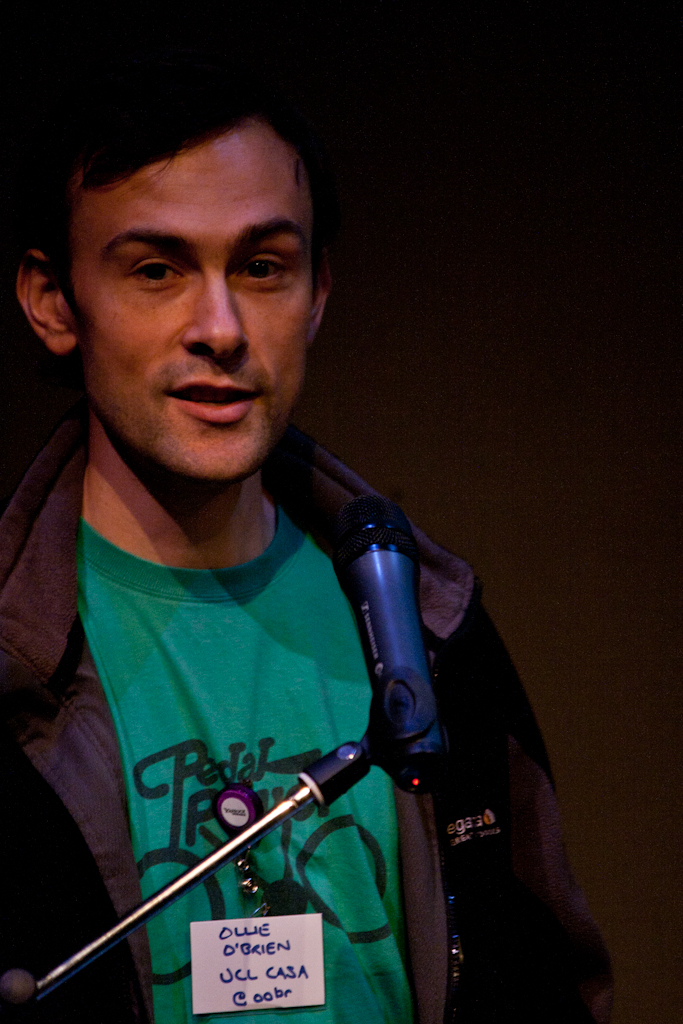
Laurence Penney is always aggregating the more “cartographicals” of us at his enlightening talks. This time, he came up with a very insightful talk about unidimensional (or linear) maps. A good example of such maps is the Trajan’s Column in Rome, which tells a story in time and space on a single dimension. Of course, a similar technique can be used to represent geographical information. In the past such maps have been used by seamen as “rolling maps“, in a way not too dissimilar to what current GPS navigators do, by displaying what your next step is. What was very interesting in Laurence’s talk is how he conveyed the high aesthetical value of these maps.
There were many other open discussions, including Nutiteq‘s Jaak Laineste showing their latest SDK, useful to create and navigate 3D maps, and ITO World‘s Peter Miller showing how ITO uses and contributes to OSM by adding layers of data. Philip Kandall of Skobbler introduced some advanced routing features (“routing from A to B is boring“) that will be in future navigators, including route calculation by time available for the journey (i.e. not as a maximum time, but as a minimum).
As traditional for WhereCamps, a couple of light-hearted moments have closed the unconference: Tim Waters‘ geo-yoga, involving stretching positions that mimic country shapes (I guess we can work on a KML representation of such positions?) and Mark Iliffe’s Geo-Locating Geobeers, suggesting how the Taarifa Platform can be used to report beer drinking location and level of… happiness.
(full set of photos http://www.flickr.com/photos/puntofisso/sets/72157629552681824/)




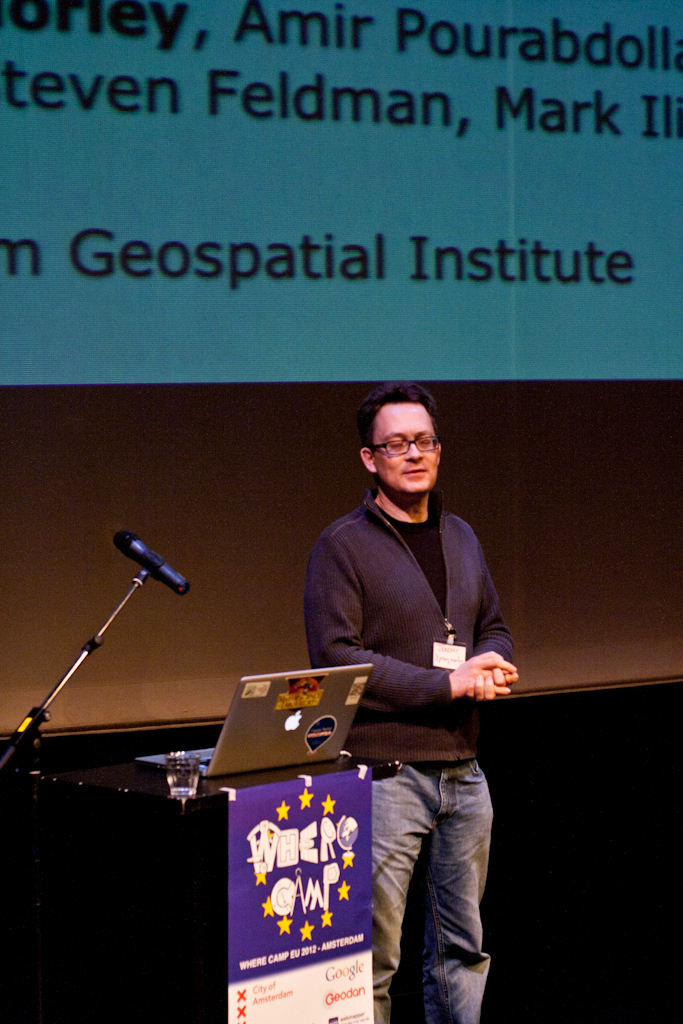
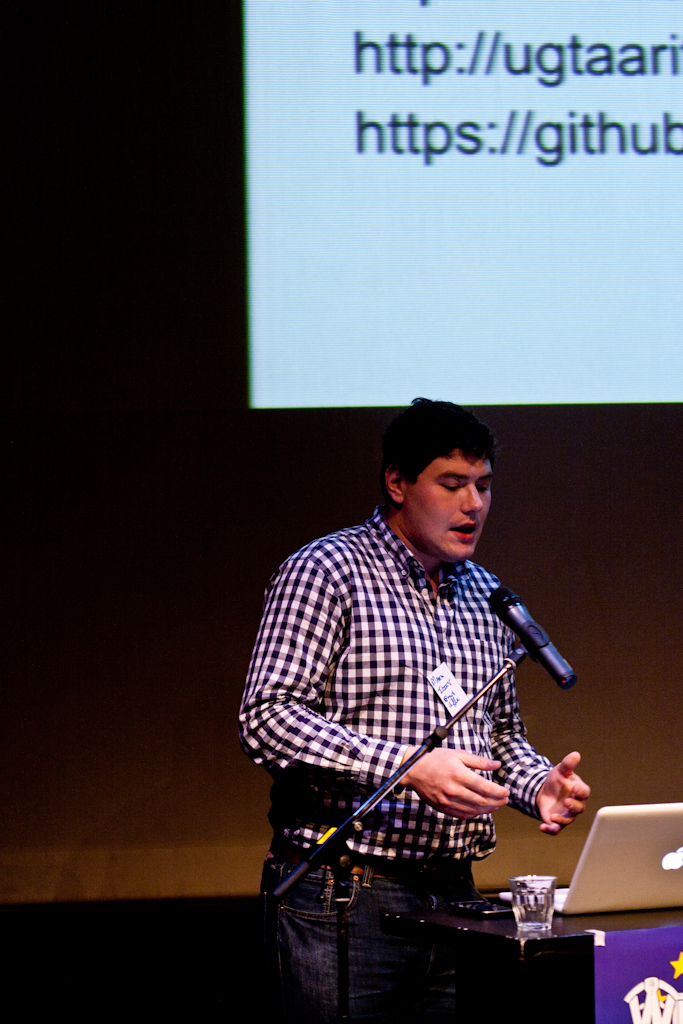
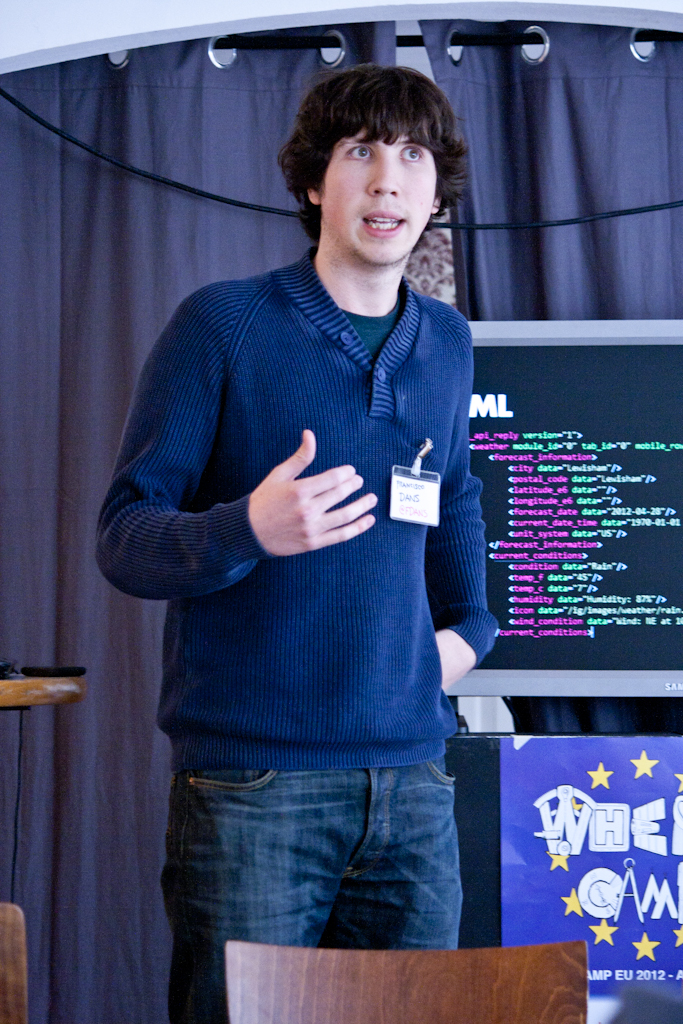
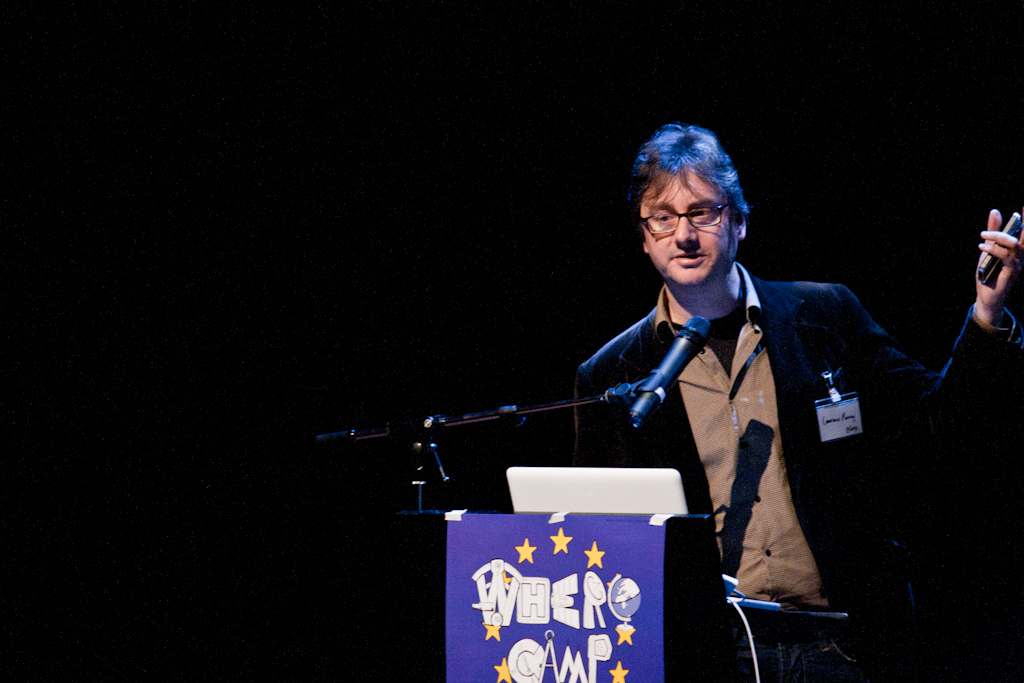

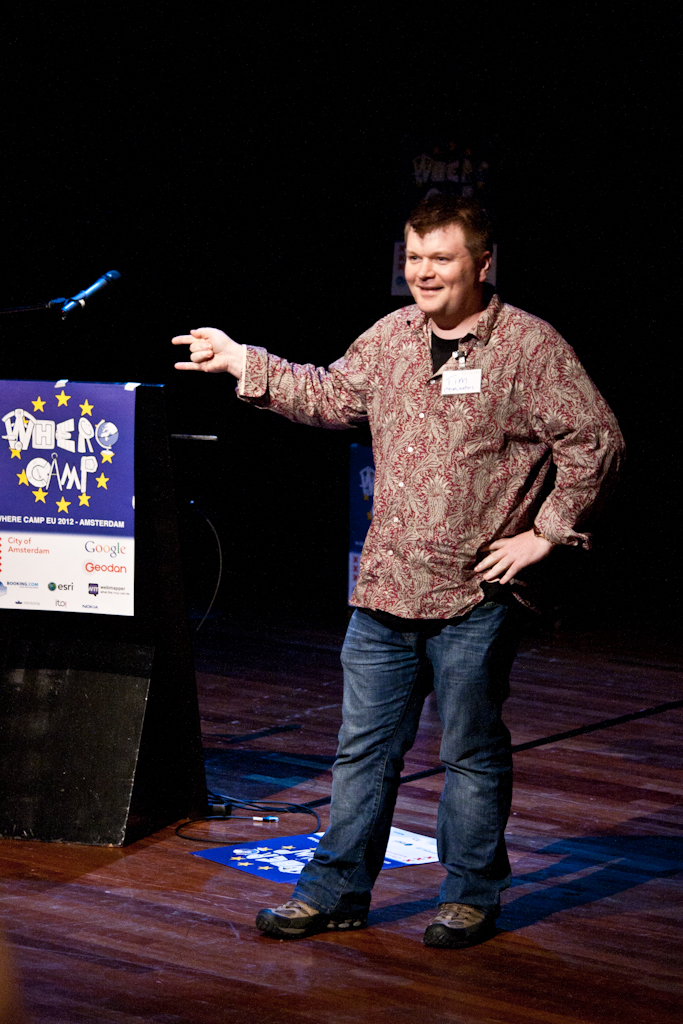
4 replies on “Highlights from WhereCampEU 2012”
[…] back to that in a column for Directions Magazine). I found reviews of whereCampEU by Christian and Puntofisso (great pictures as well!), which looks very complete. Did I miss others? A few of my observations: […]
Credit where due: Hugues Bouchard contributed to the work on hyperlocal trends in hashtags (and tweets in general). The demo in the picture was designed, and being presented by, Diego Arechaga.
Very nice writeup!
Hi Vanessa, thanks! I was meant to ask the names and of course I forgot 🙂 Two warm on Queen’s Day, you know…
[…] took place through WhereCampEU in Amsterdam, a geography-themed hackathon. Two team members presented Taarifa and its objectives, and in return, several technologists engaged to provide new ideas for […]